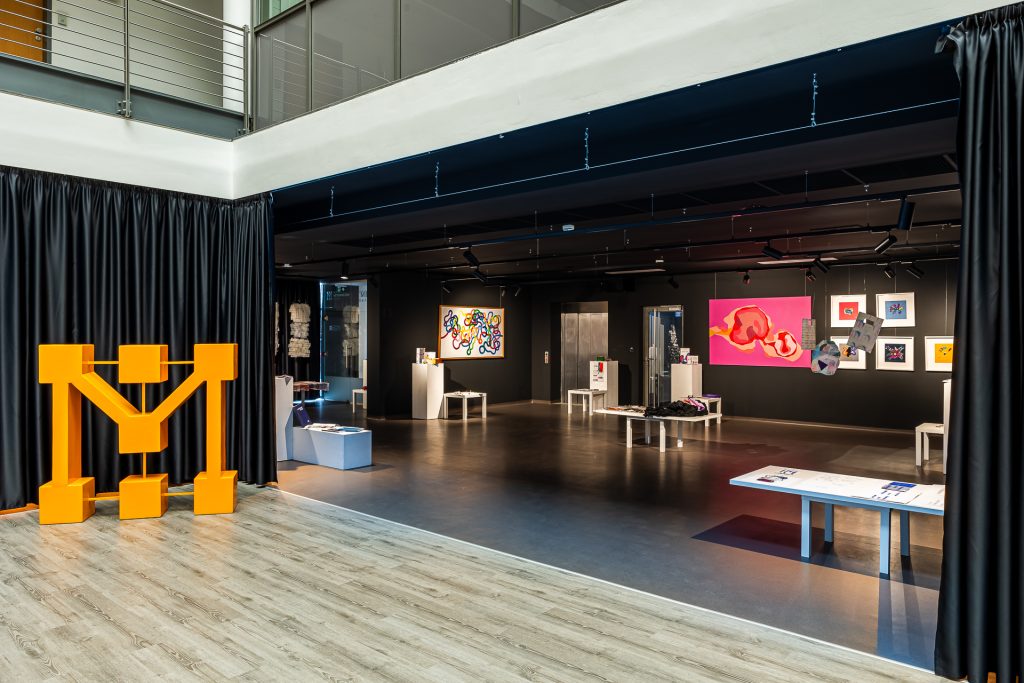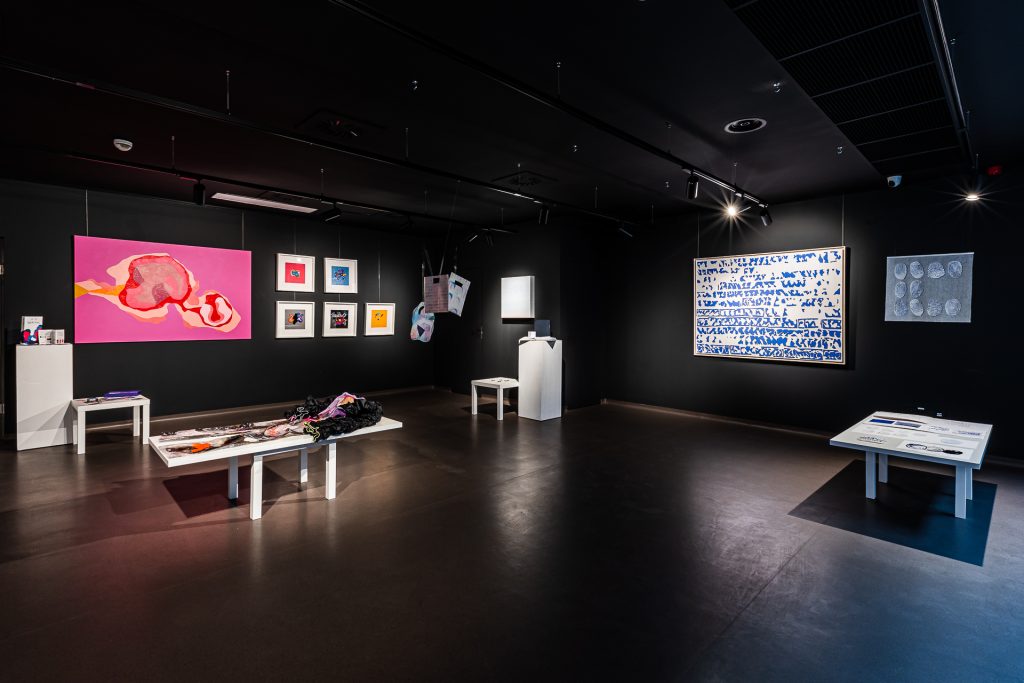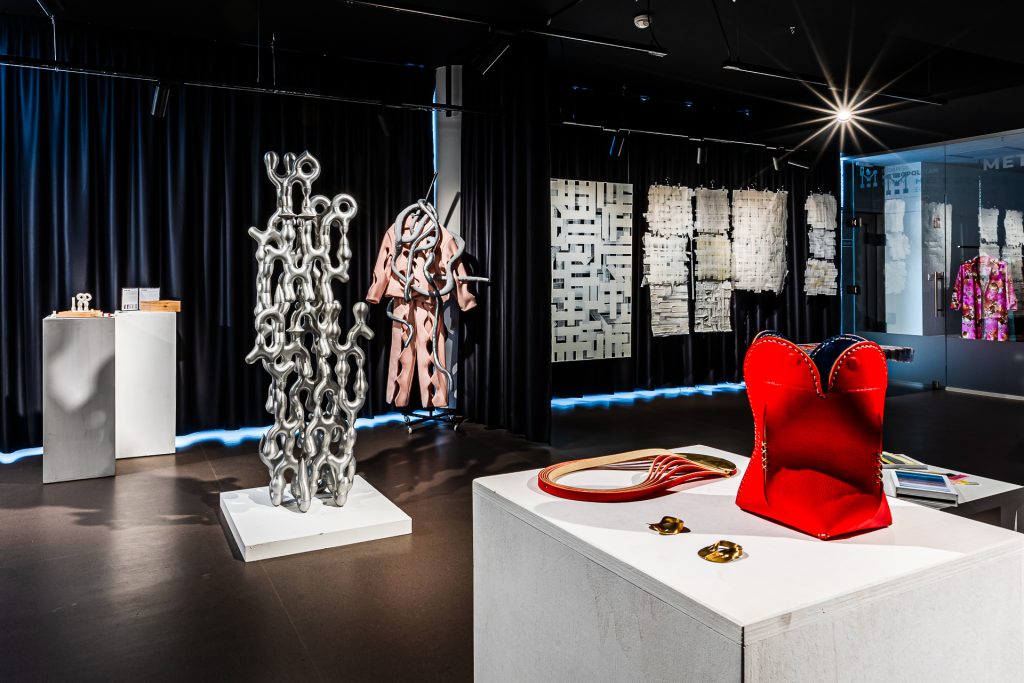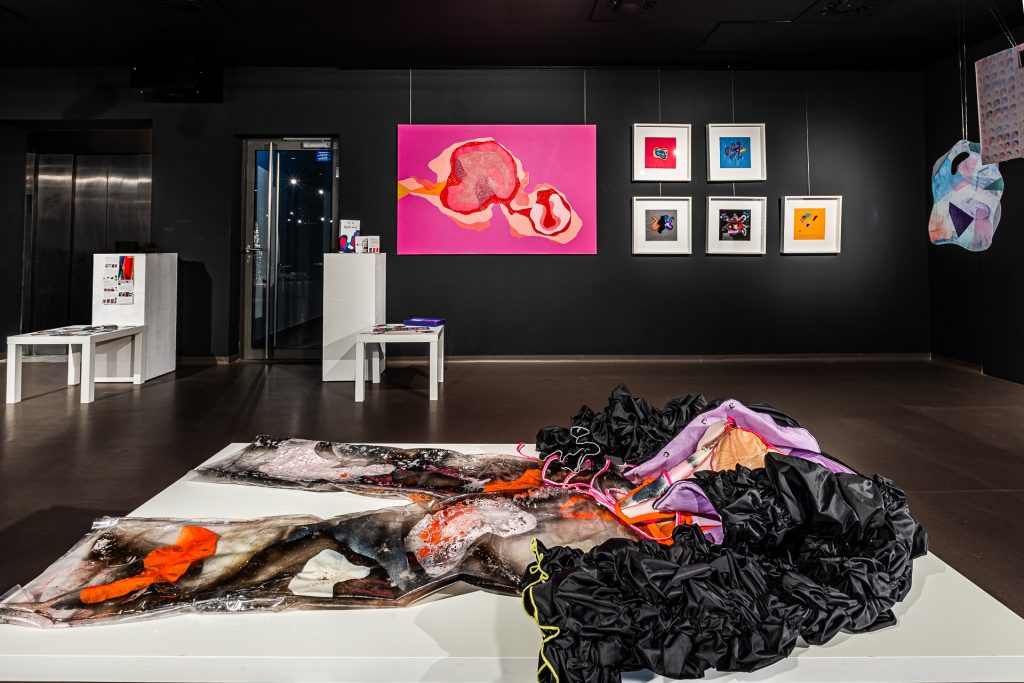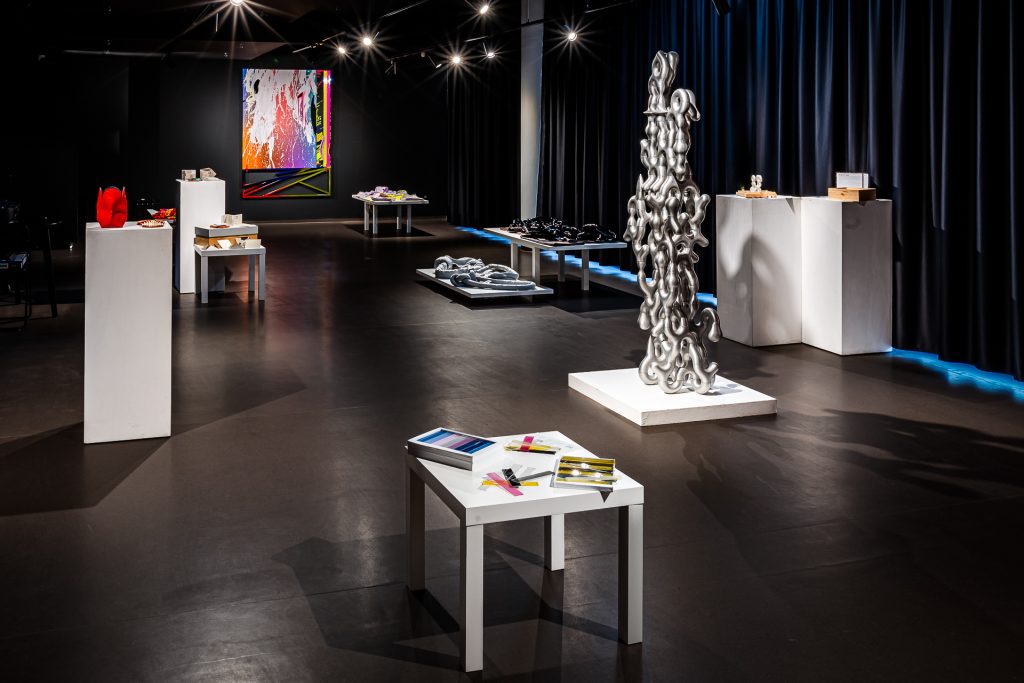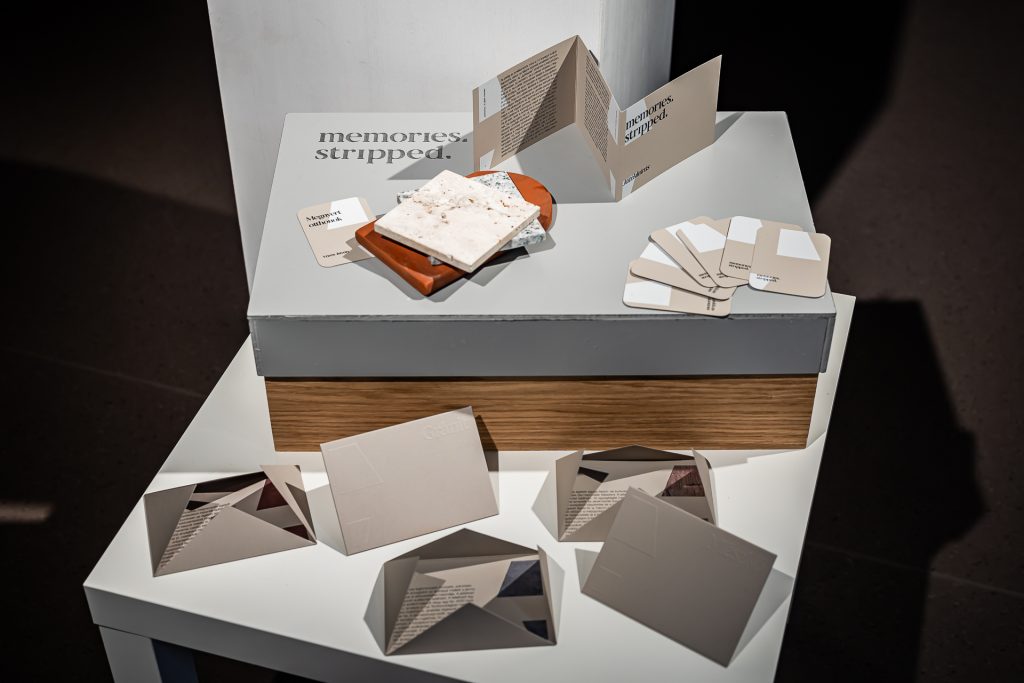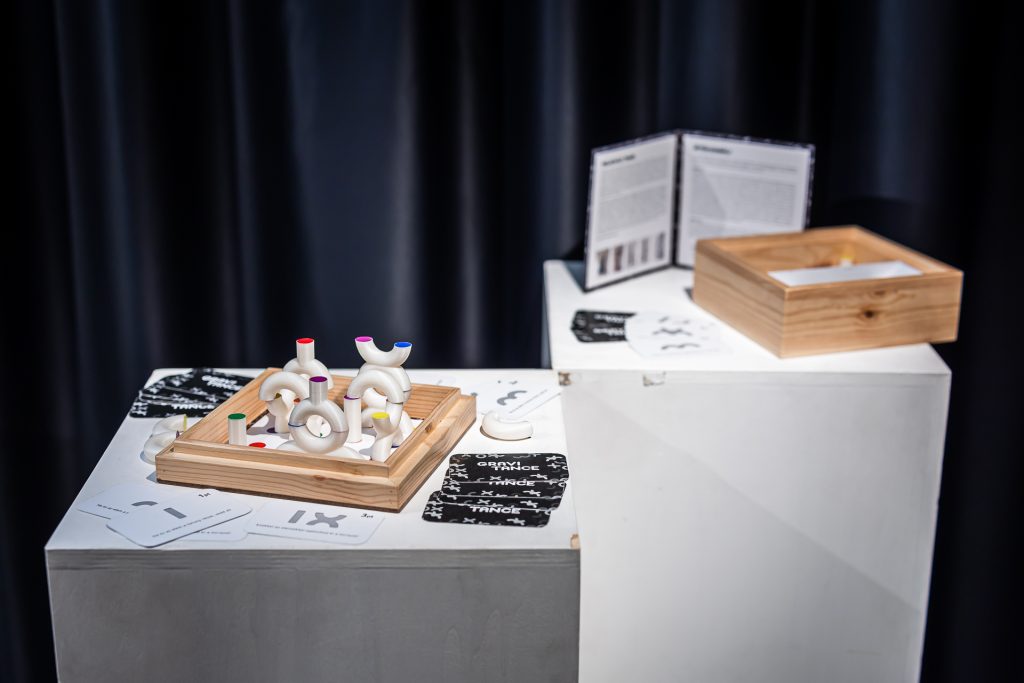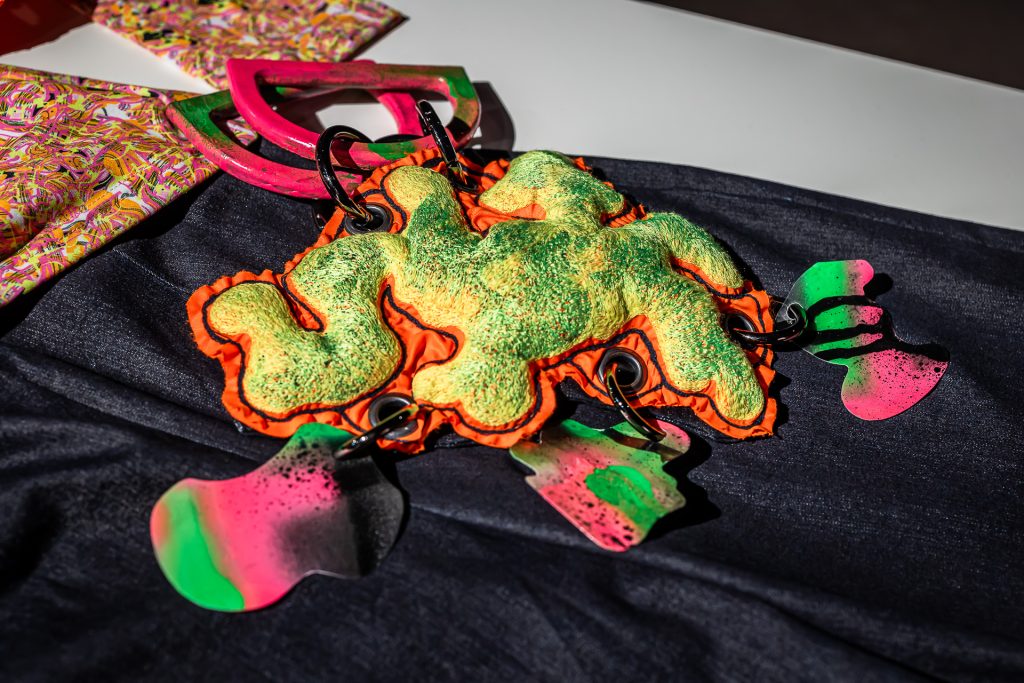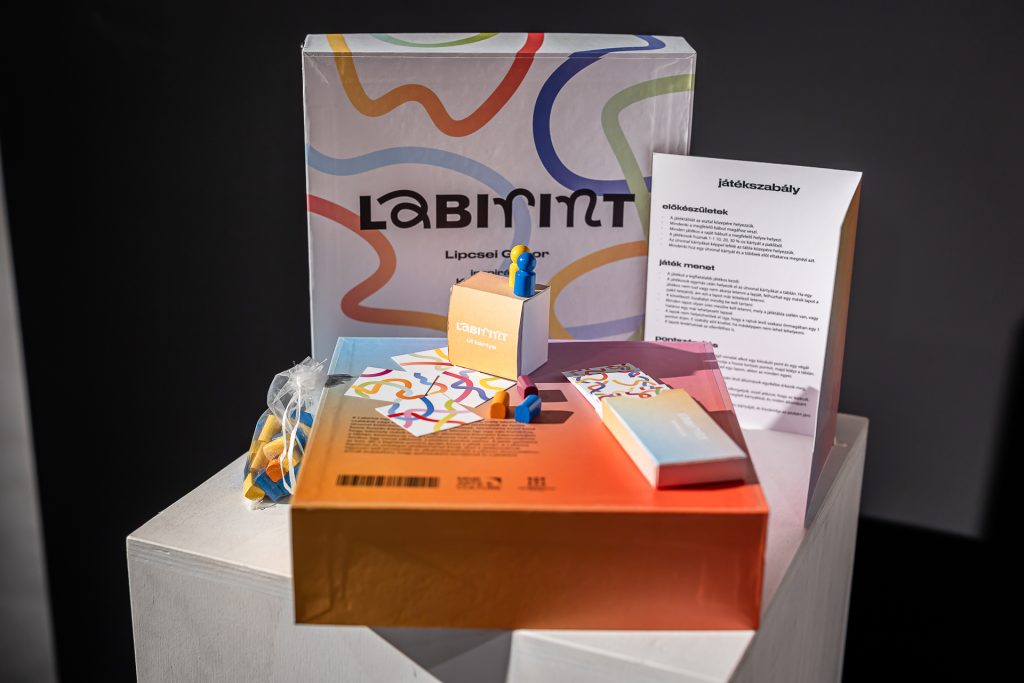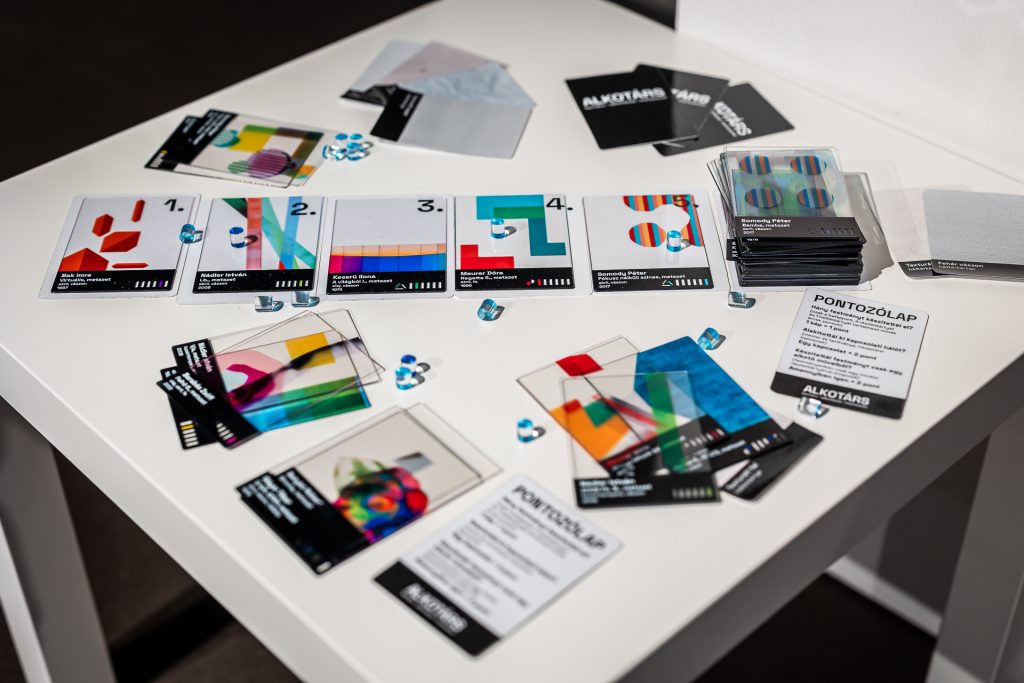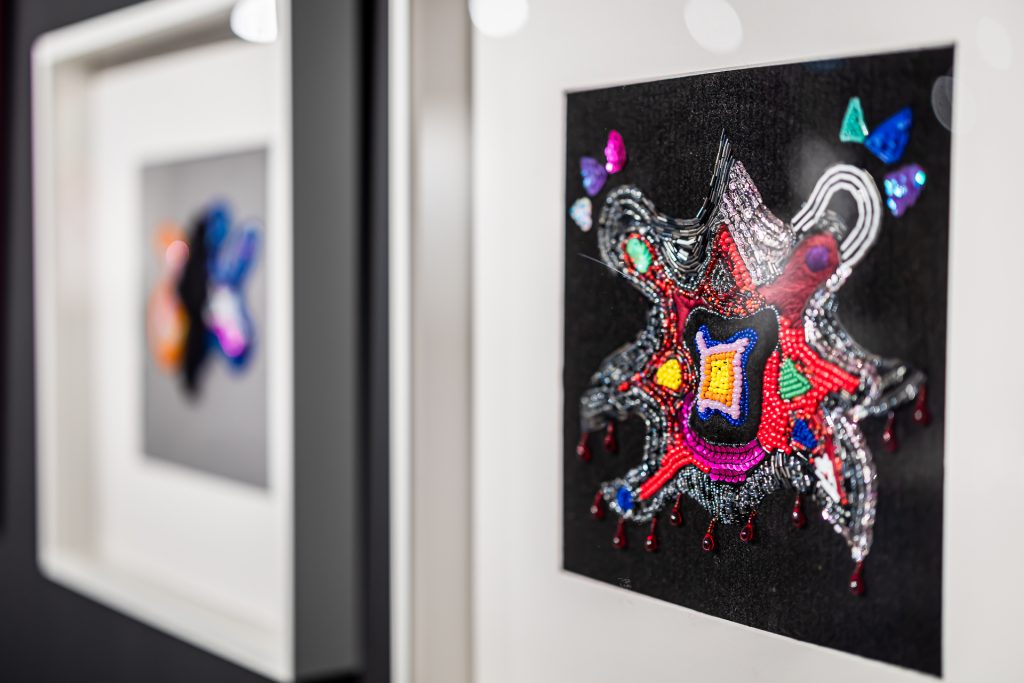Playfulness, experimentation and innovation. The exhibition titled Immersion, a collaboration between METU and MNB Arts and Culture, is based around these concepts at the intersection of art and design. In the framework of the joint courses in the autumn semester of 2023/2024, students of graphic design and fashion, textile and jewellery-accessories design created their semestrial design projects inspired by the works of the contemporary art collection managed by the Central Bank of Hungary (Magyar Nemzeti Bank, MNB).
The exhibition of student work will be based around a MNB artworks, each of the latter appearing as a hub, showcasing the results. Interdisciplinary in its genre, the genre diversity of the resulting ideas is indicated by the fact that, for example, Tamás Melkovics’ organically sprawling sculptures made of modules have inspired the creation of clothing objects, board games, handbags and jewellery collections. The students chose different strategies, deploying the most varied design practices and occupying different positions in the domain defined by the concepts of quotation, paraphrase or homage.
Different forms of dialogue were realised, in relation to „object of inspiration” and „reflection”. In some cases the work of art that triggered the student’s imagination is immediately recognisable, in other cases the connection is more complicated, more metaphorical: in addition to transcribing the colours, forms and visual features of a particular artist, for example, translating the works of Márton Nemes into the language of fashion; there were also students who adopted the working method and technique of a particular artist, for example, the construction of layers in the case of Ádám Szentpétery. A more conceptual relationship is marked by the use and reinterpretation of an often quoted, anecdotal sentence of the artist as a starting point, such as the visual diary based on Zsófi Barabás’s „emotional abstraction” or the writing system built on the work of Kamill Major. Some students translated a particular work by an artist, such as Ilona Keserü’s Labyrinth, into the language of games, while others took groups of artists or even the collection itself as a starting point – thus creating representative albums.
It is a pleasure for us to exhibit together, to have a real dialogue between student works and the works of artists from different generations in the MNB’s collection.
Kinga Hamvai


